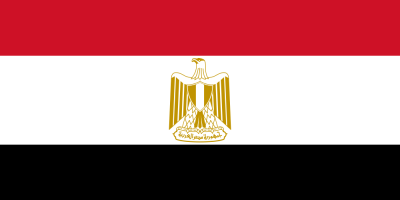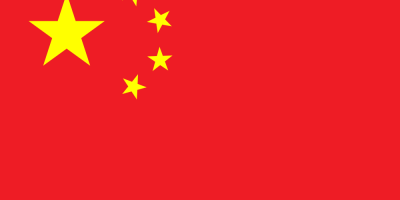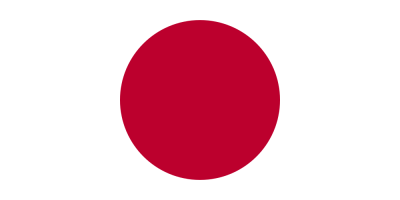Pakistan flag color codes features a green and white field, with a white crescent moon and five-pointed star in the hoist. The specific Pakistan flag color codes in various formats are essential for digital graphic designers and artists looking to accurately recreate this iconic banner. In this article, we provide the Pakistan flag color codes in HTML HEX, RGB, PANTONE, HSL, CMYK, HWB and NCOL formats. Read on for the precise Pakistan flag color codes for digital design work.
Table of Contents
What are the colors of Pakistan flag?
The colors of the Pakistan flag are:
- Green – Specifically Pantone 340C green. This covers the broad vertical bar on the hoist side of the flag.
- White – This covers the broad vertical bar on the fly side of the flag, as well as the crescent moon and star in the center.
The green represents Pakistan’s Muslim majority population, while the white represents religious minorities and the country’s commitment to peace. The crescent moon and star are traditional Islamic symbols.
So in summary, the two colors are green and white, with green taking up a larger portion of the flag. The specific green Pantone shade is a vital detail for accurately reproducing the Pakistan flag colors digitally or in print.
Pakistan flag color codes & Color Names:
GREEN
| Color Model | Value |
|---|---|
| HTML | #138808 |
| HEX | #006400 |
| RGB | 19, 136, 8 |
| PANTONE | (Not available) |
| HSL | 113.7, 89.1%, 28.2% |
| CMYK | 86.4%, 0%, 94.1%, 46.3% |
| HWB | 113.7, 9.8%, 46.3% |
| NCOL | (Not specified) |
WHITE
| Color Model | Value |
|---|---|
| HTML | #FFFFFF |
| HEX | #FFFFFF |
| RGB | 255, 255, 255 |
| PANTONE | (Not available) |
| HSL | 0, 0%, 100% |
| CMYK | 0%, 0%, 0%, 0% |
| HWB | 0, 100%, 0% |
| NCOL | (Not specified) |
What is the meaning of colors in the Pakistan flag?
The two colors in the Pakistan flag have the following symbolic meanings:
Green – The green color takes up a larger portion of the flag and represents Pakistan’s Muslim majority population. It is also a traditional Islamic color that symbolizes nature and growth.
White – The white color represents religious minorities and minority groups in Pakistan. It also symbolizes peace and harmony. The white crescent moon and star are traditional Islamic symbols.
So in summary:
- Green represents the Muslim majority population and the role of Islam in Pakistan.
- White represents religious minorities, peace and harmony amongst different groups.
- The crescent moon and star symbolize Pakistan’s status as an Islamic nation.
The green and white coloring contrasts the country’s majority Muslim population with its commitment to protecting minority rights and achieving religious harmony. The symbolic meanings behind the flag’s simple two-tone design celebrate Pakistan’s Islamic heritage while conveying a message of unity.
Explore More Flag Colors:
FAQs: Frequently Asked Questions:
What type of country is Pakistan?
Pakistan is a country located in South Asia. It is a federal parliamentary democratic republic, which means that it has a system of government where representatives are elected by the people to make and enforce laws. The President is the head of state, and the Prime Minister is the head of government. Pakistan gained independence in 1947 from British rule and has a diverse cultural, linguistic, and ethnic population. The country has a mixed economy and plays a significant geopolitical role in the region. The official language is Urdu, and Islam is the state religion.
Why is Pakistan called Pak?
The name “Pakistan” is a portmanteau that combines two components: “Pak” and “stan.” “Pak” is derived from the Persian and Urdu word “پاک” (pāk), which means “pure” or “clean.” “Stan” is a Persian suffix meaning “land” or “place of.”
Which country has most Pakistani population?
Saudi Arabia has one of the largest populations of Pakistani expatriates. There is a significant Pakistani diaspora in Saudi Arabia, with many Pakistanis working there for employment opportunities.
How many states are in Pakistan?
Pakistan consists of four provinces. These provinces are:
Punjab
Sindh
Khyber Pakhtunkhwa (KP)
Balochistan
In addition to the provinces, there are two autonomous territories:
Azad Jammu and Kashmir (AJK)
Gilgit-Baltistan (GB)
Is Pakistan a rich or Poor country?
Pakistan is classified as a developing country, and its economic status is often characterized as lower-middle-income. The country faces various economic challenges, including poverty, unemployment, and economic inequality. While Pakistan has made progress in certain sectors, such as agriculture and services, it continues to grapple with economic issues.
What is special about Pakistan?
Here are some aspects that are considered special about Pakistan:
Cultural Diversity: Pakistan is home to a diverse range of ethnicities, languages, and cultures. The country has a rich history that includes the ancient Indus Valley Civilization, which is one of the world’s oldest civilizations.
Historical Sites: Pakistan boasts several historical sites, including Mohenjo-daro and Harappa, remnants of the Indus Valley Civilization. The Badshahi Mosque in Lahore, Shah Jahan’s Fort in Thatta, and the archaeological ruins of Taxila are other notable landmarks.
Natural Beauty: Pakistan features breathtaking landscapes, including the towering peaks of the Himalayas and Karakoram, picturesque valleys like Swat and Hunza, and the world’s second-highest mountain, K2.
Culinary Delights: Pakistani cuisine is known for its rich flavors and variety. Dishes like biryani, nihari, kebabs, and various types of bread (roti, naan) are popular and enjoyed both nationally and internationally.
Why is Pakistan fighting?
Here are some key reasons for conflicts or instances of violence in Pakistan:
Territorial Disputes: Pakistan has longstanding territorial disputes, particularly with India over the Kashmir region. The two countries have fought several wars over Kashmir, and the issue remains a source of tension.
Militancy and Extremism: Pakistan has faced internal challenges related to militancy and extremism. Some regions, particularly along the Afghanistan-Pakistan border, have been affected by insurgent groups. The presence of such groups has led to both internal and external security concerns.
Terrorism: Pakistan has been a victim of terrorism, with various extremist groups carrying out attacks on civilian and military targets. The fight against terrorism has been a major focus for the Pakistani government, and military operations have been conducted to counter extremist elements.
Ethnic and Sectarian Tensions: Pakistan is ethnically and religiously diverse, and at times, tensions arise between different ethnic and sectarian groups. These tensions can lead to localized conflicts.
What is Pakistan No 1 export product?
textiles and apparel have traditionally been Pakistan’s largest export products. The country is known for its significant contribution to the global textile industry. Textile exports from Pakistan include various products such as cotton yarn, fabrics, garments, and made-up articles.
Is Pakistan a safe country?
The safety of any country can be subjective and may vary depending on various factors, including the region, current events, and individual experiences. Pakistan, like many countries, has areas that are generally considered safe for residents and visitors, while other areas may have security concerns.













